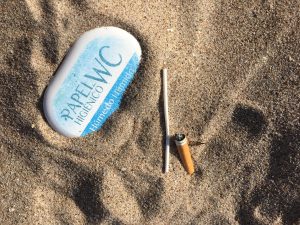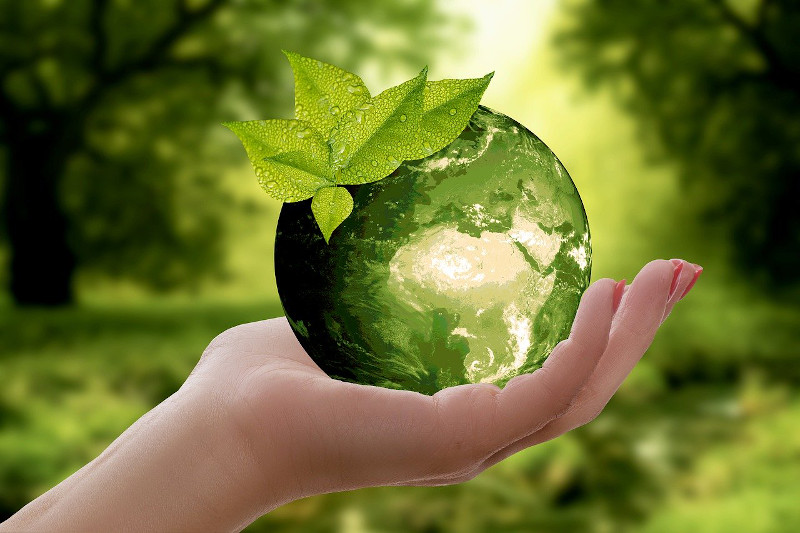Until The Mid-20th Century, plastic was a material that was rarely used. Modern plastic started to be manufactured after the 2nd World War when the army realised how versatile this material could be, so it went to be used to protecting cargo to keep our food fresh as packaging and household products. Synthetic materials such as nylon went to be used to manufacture parachutes to being used as stockings, and plastic began to be part of our lives. Clearly this material also helped to lower production costs, but at what price?
It is fairly common to find food containers, bottles, wrapping materials and other leftovers that we use on our daily basis not only in parks and streets of some cities, but also in natural spaces such as beaches and mountains. This ´phenomenon´ that invades natural environments with our waste it is called littering and despite its obvious consequences it is an increasing problem of our time.
Perhaps what you might not know, is that these debris are not only found around us but thousands of kilometers away, and that there is so much plastic in the sea that 5 huge islands have been formed in the 5 oceanic gyres that are produced by its water currents on the planet. These currents are eddies produced by the rotating action of the earth and the winds that move from the tropics to the Polar zones. These currents act as carrier belts on which the plastics go from the coasts to the distant waters where these islands are being formed. The largest, located in the North Pacific gyre is estimated to have more than 2 billion pieces of plastic, 10 times as many units as there are stars in the Milky Way, and which extends over a surface area of approximately 3 times the size of France. Together the five large spots contain more than 5 billion pieces of plastic that would weigh almost 270,000 tons.

According to a study in the journal Science, each year more than 8 million tons of plastic are thrown into the oceans. The causes, probably besides of careless individual actions, are insufficient or poor waste management. It must be taken into account that what causes garbage is not the material itself but the way it is managed. It is estimated that 20% of the plastic in the oceans is the product of oil rigs and ships, while 80% comes from onshore production. The rivers are the main routes by which plastic reaches the ocean, a problem that particularly affects Asia, that has 20 of the most polluting rivers in the world. The most prominent contributor to pollution is China followed by the United States, Germany and Brazil.
For those who like me, are concerned about the environment, we wonder what we could done about this besides recycling or the occasional volunteering work. Hence thinking about all these data and conscious about what social media could do, I came up with this project where I’m determined to raise awareness about sustainability within the cosmetics industry.
I have been working as a make-up artist for more than 10 years, so a countless number of high end cosmetic brands have passed through my hands. Most of them using plastic in their package, something that makes me wonder – Would it be possible to supply these products in a more eco-friendly. way? This concern is nothing new that has just crossed my mind, luckily this philosophy is increasingly popular, so fortunately we can say that there are more and more companies that produce their products taking into account factors such as packaging and production proximity.
When I began to become aware of the environmental damage that my lifestyle caused, I wanted to change radically, buying only sustainable package products, but soon I realized that the goal of being 100% sustainable was not achievable and I accepted what many activists are stating, and that is simply that what the world needs is not a person who does everything perfect, but a lot of imperfect conscious people, with their contradictions but committed to changing step by step their habits to improve and achieve a more sustainable future.
Reversing the damages caused to date is an inescapable duty. Not just for ethical reasons, but because, as Woody Allen said, the future should concern us because it is where we are going to spend the rest of our lives.
Sources:
https://www.nationalgeographic.com.es/ciencia/grandes-reportajes/lo-que-el-oceano-esconde-2_8611/5
https://science.sciencemag.org/content/358/6365/843.full
https://ourworldindata.org/plastic-pollution
Si quieres actuar frente a este problema o ampliar esta información también puedes consultar aquí:
https://cleanseas.org


